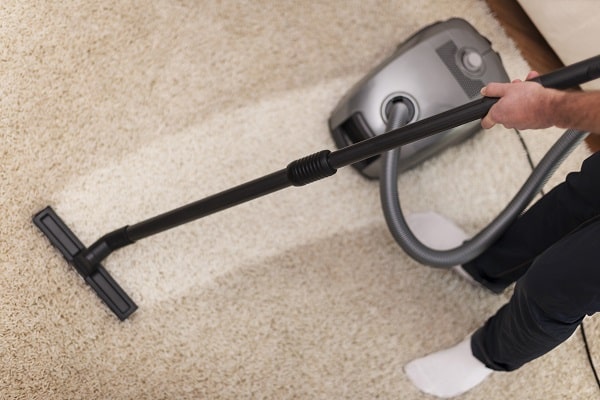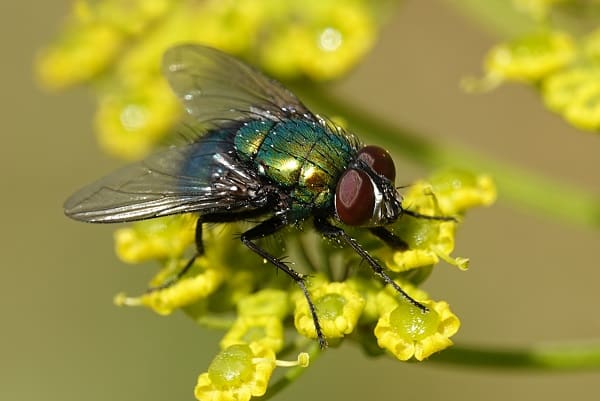Flies in the house are not just a nuisance; they pose a real health risk, capable of carrying numerous diseases. A constant buzz, an incessant landing on food items, and flies’ simple yet profoundly irritating presence can make any home less inviting. Therefore, understanding how to prevent these winged intruders from entering your living space becomes paramount. This comprehensive guide aims to offer solutions for everyone, whether you prefer natural remedies or commercial solutions. This post covers everything from understanding why flies are attracted to your home to debunking common myths. So, let’s dive right in.
Contents
Understanding Why Flies Are Attracted to Your Home

The first step to solving any problem is understanding its root cause. Flies are opportunistic creatures that are always looking for food, moisture, and a safe environment. Kitchens and dining areas with leftover food and crumbs are a feast for flies. Trash bins with organic waste are another hotspot.
Water plays a crucial role, too. Damp areas, whether in the bathroom or outside near trash cans, attract flies. Often, flies will breed in these moist environments, compounding the problem. Thus, the first line of defense against flies is understanding their basic needs and cutting off their supply at the source.
Immediate Actions to Take

When faced with a fly infestation, immediate action is needed to curb the problem. The longer one waits, the more challenging it becomes to tackle the situation. Start by removing any food waste and securely storing it in a sealed bin. If your trash cans are outside, make sure they are tightly closed to prevent flies from breeding there.
Cleaning is non-negotiable when it comes to fly prevention. Surfaces that come in contact with food should be cleaned promptly. For instance, countertops, tables, and stovetops need to be wiped clean regularly. And do not forget the floors; crumbs and spills are the perfect food source for flies. Keeping your living area clean and clutter-free goes a long way in making your home less inviting to flies.
Natural Remedies for Fly Control

Many people are uncomfortable using chemical products to control flies, especially in environments where children or pets are present. Homemade fly traps are often easy to make and highly effective. A simple trap can be made with sugar, soap, and water, attracting the flies to a bowl from which they cannot escape.
Herbal deterrents are another effective yet often underutilized method for keeping flies at bay. Herbs such as basil and lavender are natural fly repellents and can be kept in pots around the home. Similarly, essential oils like peppermint and citronella can be used. Simply dabbing some of the oil on a piece of cloth and leaving it in areas where flies frequently can deter them from entering your space.
Commercial Solutions

When natural remedies do not suffice, or if the fly problem is severe, commercial solutions may be necessary. Various over-the-counter sprays are specifically designed to kill flies on contact. These sprays can be useful but must be applied carefully, especially around food or dining areas.
Electronic fly zappers are another popular solution. These devices lure flies using light and then zap them with electricity. While they are effective, their placement should be carefully considered to not become an eyesore or a hazard in the home. Lastly, for persistent or severe infestations, professional pest control services offer specialized treatments that can provide long-lasting relief.
Maintenance Practices to Keep Flies Away

The best way to deal with flies is to prevent them from entering your home in the first place. Regular cleaning schedules should be maintained, ensuring that no food waste or spills are left unattended. Vacuuming and mopping floors, wiping down surfaces, and cleaning sinks are essential steps in a comprehensive cleaning regimen.
Another critical aspect of fly prevention is sealing off entry points. This entails going beyond just closing doors and windows. Examine your home for cracks in walls, gaps in window frames, or holes in screens where flies could potentially enter. Sealing these areas with caulk or mesh can significantly reduce the likelihood of flies gaining entry into your home.
Monitoring and Adaptation

An often overlooked aspect of fly control is ongoing monitoring and adaptation. Just because a particular solution worked once doesn’t mean it will be effective indefinitely. Regularly inspect your home for potential fly breeding grounds and entry points, and take corrective measures as needed.
Seasonal changes bring different challenges in pest control. The methods effective during the hot summer months may not yield the same results during winter. Be prepared to adapt your strategies according to the season. Online communities and forums can also be valuable resources for learning about new methods and tips that have proven effective for others.
Common Myths About Fly Prevention
When it comes to fly control, myths and misconceptions abound. One common myth is that fly swatters are a sufficient solution for keeping flies at bay. While fly swatters can kill individual flies, they do nothing to address the root cause of the problem or prevent future infestations.
Another widespread myth is that flies are merely annoying and pose no real health risks. This misconception can lead to a lax attitude toward fly control, exposing residents to potential diseases carried by flies. Different species of flies may also require different prevention and control methods, so one-size-fits-all solutions are another myth to avoid.
The Bottom Line
In summary, fly prevention is a multi-faceted issue that requires a comprehensive approach. Understanding the factors that attract flies to your home provides the foundation for effective control measures. Both natural and commercial solutions have their place, and ongoing maintenance and monitoring are key to long-term success. Ignoring common myths and arming yourself with accurate information can make your quest for a fly-free home a reality. With these actionable tips, you are well-equipped to reclaim your space and enjoy the peace of a fly-free home.



